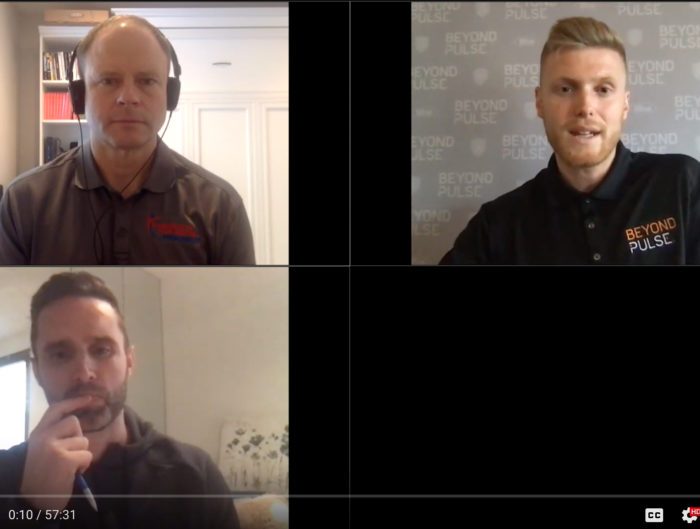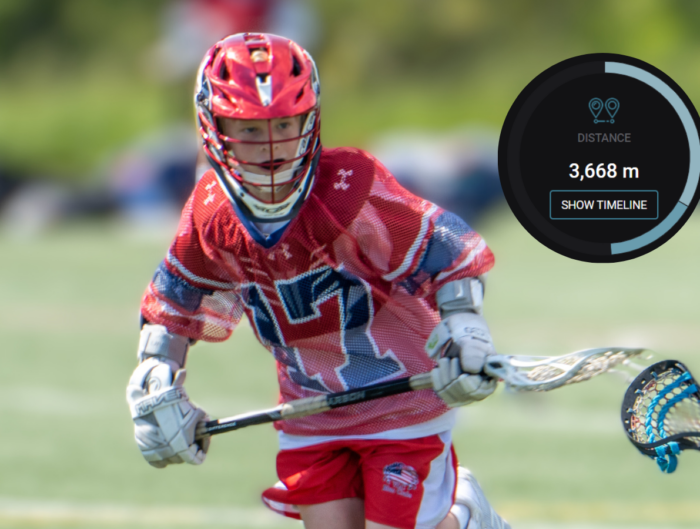Much of the soccer-centric wearable tech market today measures a successful training session based on the number of touches you might take with your right – or left – foot or how much distance a player covers down to the nearest meter. While these may be relevant in their own context, they are less relevant for 1-3 players on every team, at every level – the goalkeepers.
With the onset of Tiki-taka and position-less soccer, there has been increased pressure to play out from the back and use the goalkeeper as a pressure release in build-up play. Thus, the goalkeeping position is no longer required to just use their hands but develop the same foot skill and distribution as the outfield players. At the professional level where players are paid to train and play, it is easier for goalkeepers to get training both as an outfield player and their additional goalkeeper-specific training, but this may not be the case in youth soccer or even university-level play.
This leads to an important question: should goalkeepers be trained as outfield players, or should their training be specialized from a young age? The answer is complex and varies across different levels and philosophies of the game.
The Challenge with Wearable Tech for Goalkeepers
Traditional metrics like the number of touches or distance covered are less applicable to goalkeepers. They simply don’t match outfield players in these external metrics unless their training regimen is significantly altered. This raises the question of the appropriateness of these metrics for goalkeeper training.
A Different Approach: Internal Metrics
Instead of focusing on external metrics like distance or touches, we can shift our attention to internal metrics such as heart rate. Internal metrics provide insight into the physiological response of the body to training. For instance, two athletes running a marathon might cover the same distance at the same speed, but their heart rates can vary significantly, indicating different levels of cardiovascular strain.
Applying this concept to soccer training, we can use Beyond Pulse’s heart rate data to understand how goalkeepers respond to their unique training activities. This approach allows us to ensure that goalkeepers experience training intensity comparable to their outfield counterparts, even if their activities differ.
More About Heart Rate
At Beyond Pulse our Heart Rate dial represents the amount of time the athlete(s) above 80% of their maximum heart rate. In other words, the amount of time the heart is experiencing a high or max response to some stimulus. We also subdivide a training session into the time spent in each Heart Rate Zone. These zones are a measure of intensity relative to the max heart rate of the athlete (remember everyone is different).
- 0-50%: Resting
- 50-60%: Light HR – Low intensity; sustainable.
- 60-70%: Low HR – Low intensity; manageable with some effort.
- 70-80%: Moderate HR – Moderate intensity; challenging but sustainable.
- 80-90%: High HR – High intensity; demanding and tiring.
- 90-100%: Maximum HR – Maximal intensity; very challenging and only sustainable for short periods.
Generally speaking, the resting and light zones (0-60%) provide little or no training benefit. Training within the low and moderate zones is a good way to improve train endurance and training in your high/max zones is a good way to increase your maximum performance/power/speed. Learn more about Zone Training with Heart Rate.
Maximizing Beyond Pulse Data for Goalkeepers
The key to effective goalkeeper training is to tailor activities to desired heart rate zones. Goalkeeper drills typically involve short-distance acceleration and quick directional changes, similar to sprint work, inducing high or maximal heart rate responses.
To increase intensity in less physically demanding drills like distribution or hand work, adding game-like elements can be effective. For distribution this may mean moving to create an angle to receive a pass, playing the pass, and then moving to create another angle to receive rather than the traditional static longball. For hand work and perception drills, consider progressing these drills in time to include movement.
In all cases, rest is the easiest way to manipulate heart rate. Reducing the time between reps, will allow less heart rate recovery and keep maintain higher training zones. So if your goal is to increase endurance or the ability to do a specific drill activity/skill for a long period, then aim for the exercise to fall in the low-moderate heart rate zones (60-80%). If the goal is to train maximum performance/power/speed of a skill or activity, then aim to train in the high/max heart rate zones (80-100%).
In summary:
- Goalkeepers’ training differs significantly from that of outfield players.
- External measures like Distance or Workload aren’t as relevant for goalkeepers.
- Heart Rate and heart rate zones provide valuable insights into the internal effects of goalkeeper training.
- Different heart rate zones are optimal for various training goals: no training effect in Resting/Light zones, endurance training in Low/Moderate zones, and maximum performance/power/speed training in High/Max zones.
- Training drills should be designed to align with the desired heart rate zone, adjusting rest periods to control heart rate intensity.

 FRA
FRA































